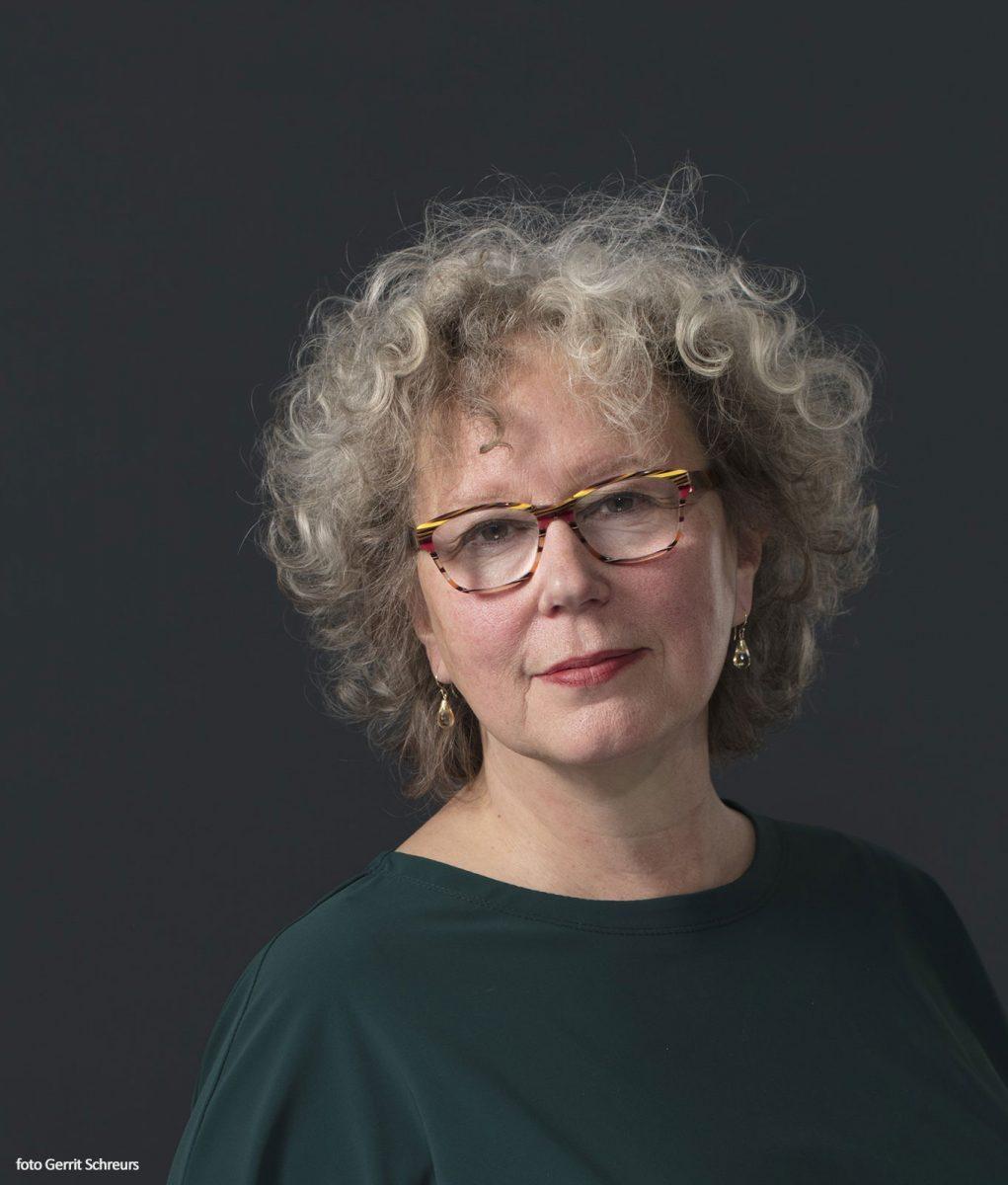

This month, I will be celebrating my eleventh year as curator at Escher in The Palace. Over the years, I have slowly but surely become attached to Escher's work, but also to Escher as a person. Luckily, his image has been featured on many of his own prints: between 1917 and 1950, Escher created nothing less than 12 self-portraits in print! In my opinion, one of the most beautiful of this series is the early linoleum cut that you see below, dating from 1918.
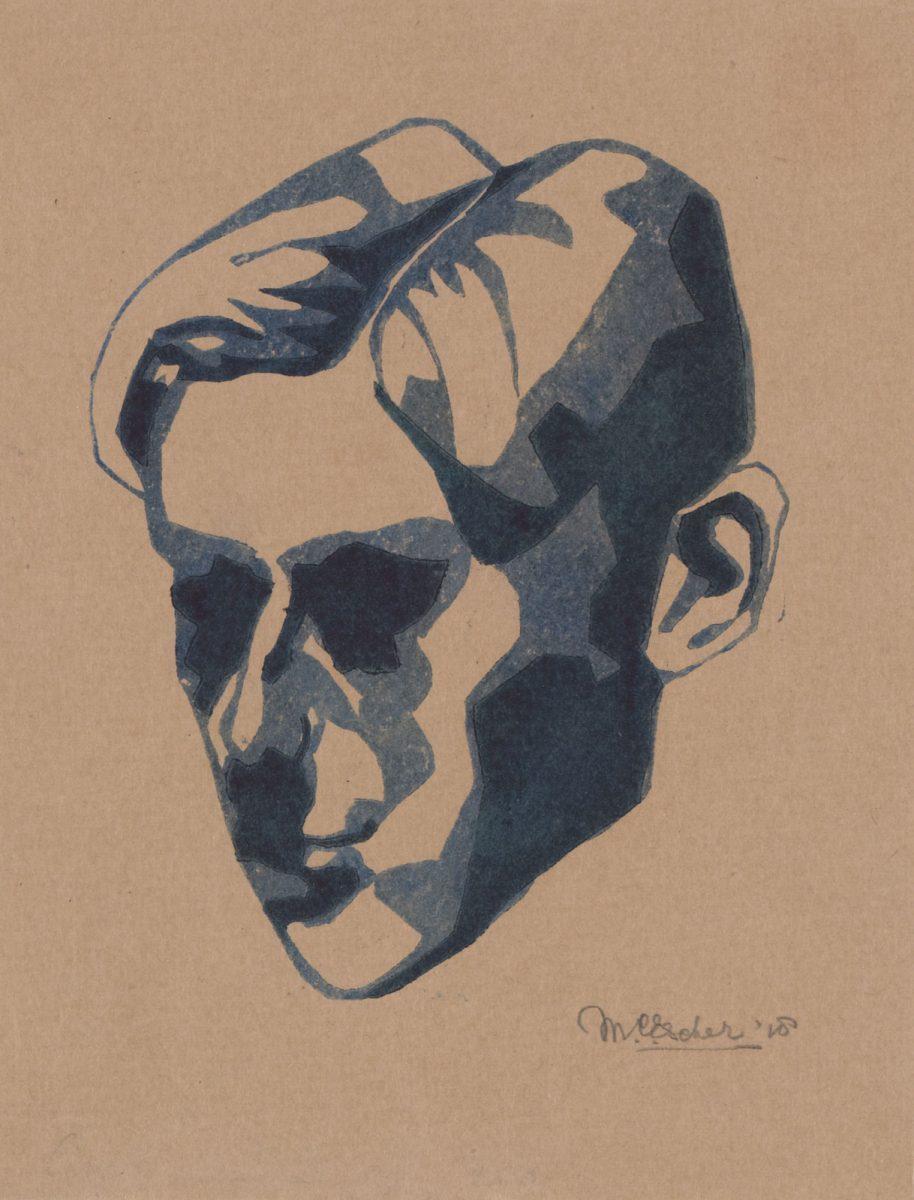
It is unfathomable how this young man, only 20 years of age, is able to create such a beautiful self-portrait using very simple techniques. This is a linoleum cut, which has less texture and is less sharply defined than a woodcut. In essence, this portrait is made up of planes of light and darker shades of blue. Escher has applied a few lines only to the eardrum, the nostrils and to the top of his head. The composition of the subject matter (his own head) is a bit more ‘relaxed’ than that of the self-portrait he created a year earlier, and differs completely from Escher's official first self portrait of 1917.
In the first self-portrait, we see a frowning young man. Escher seems to be concentrating on something, a frown crossing his brow.
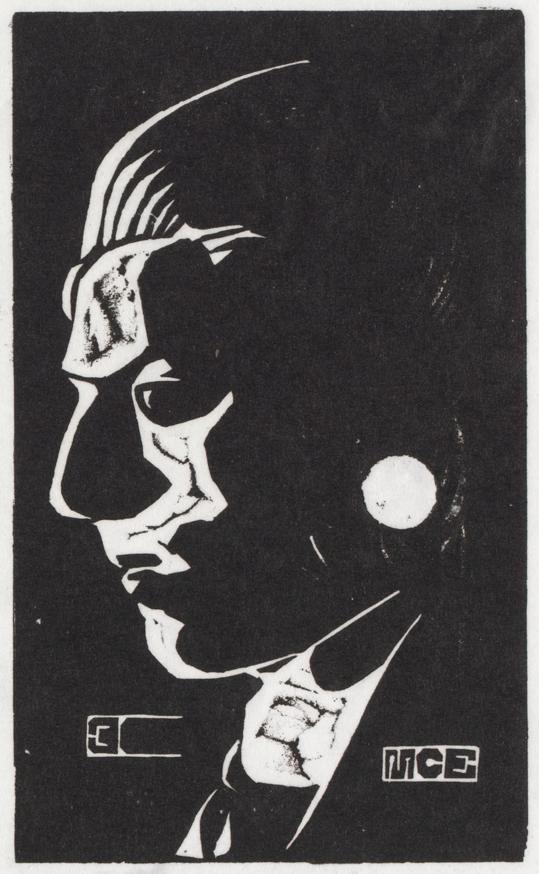
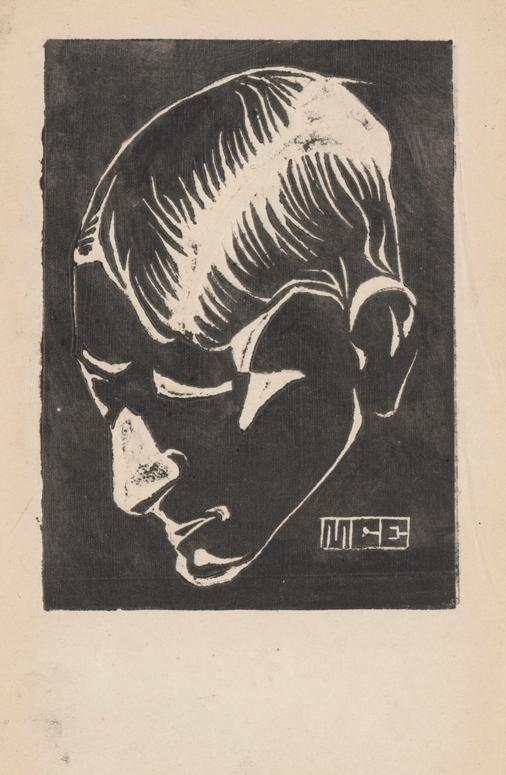
Before I continue, I ought to mention two remarkable facts about the first self-portrait. Close to the ear we can see a hole, which was made after Escher's death. This is a posthumous print. After Escher's death, a hole was drilled into all of his wood blocks. This assures the owners of the prints that their treasured possessions were printed by the master himself. But there is another remarkable fact. Escher made a classic beginner's mistake on the left-hand side of the print: the last letter of his monogram, MCE, is in mirror image! This may partly explain why he never printed a copy. He corrected his error by putting the monogram on the correct right-hand side of the print.
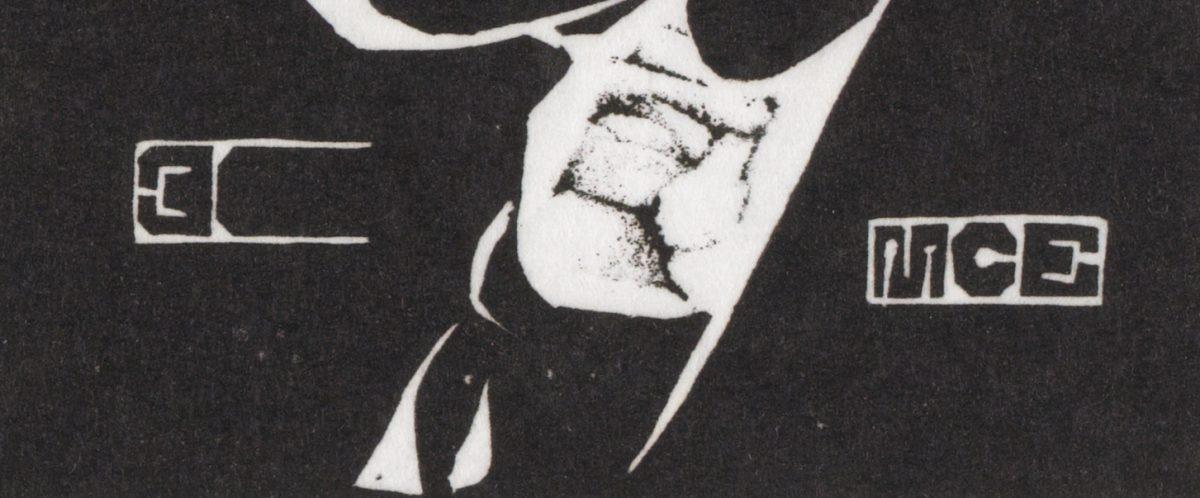
If we arrange the first three portraits in chronological order, we can instantly see the differences. The enormous strides that Escher made in 1918. He had left his parental home in Oosterbeek, having failed his HBS final exams. However, thanks to his father's mediation and a special arrangement, he was able to enrol onto the preparatory year of the Delft Institute of Technology. Unfortunately, Escher experienced a range of ailments including a serious skin infection, and had to abandon his studies. Drawing began to consume most of his time and the fruits of his labour can be seen in the third portrait. The spatial composition and volume of the head are more pleasingly arranged and Escher captures the colour surprisingly well for an untrained and inexperienced amateur.
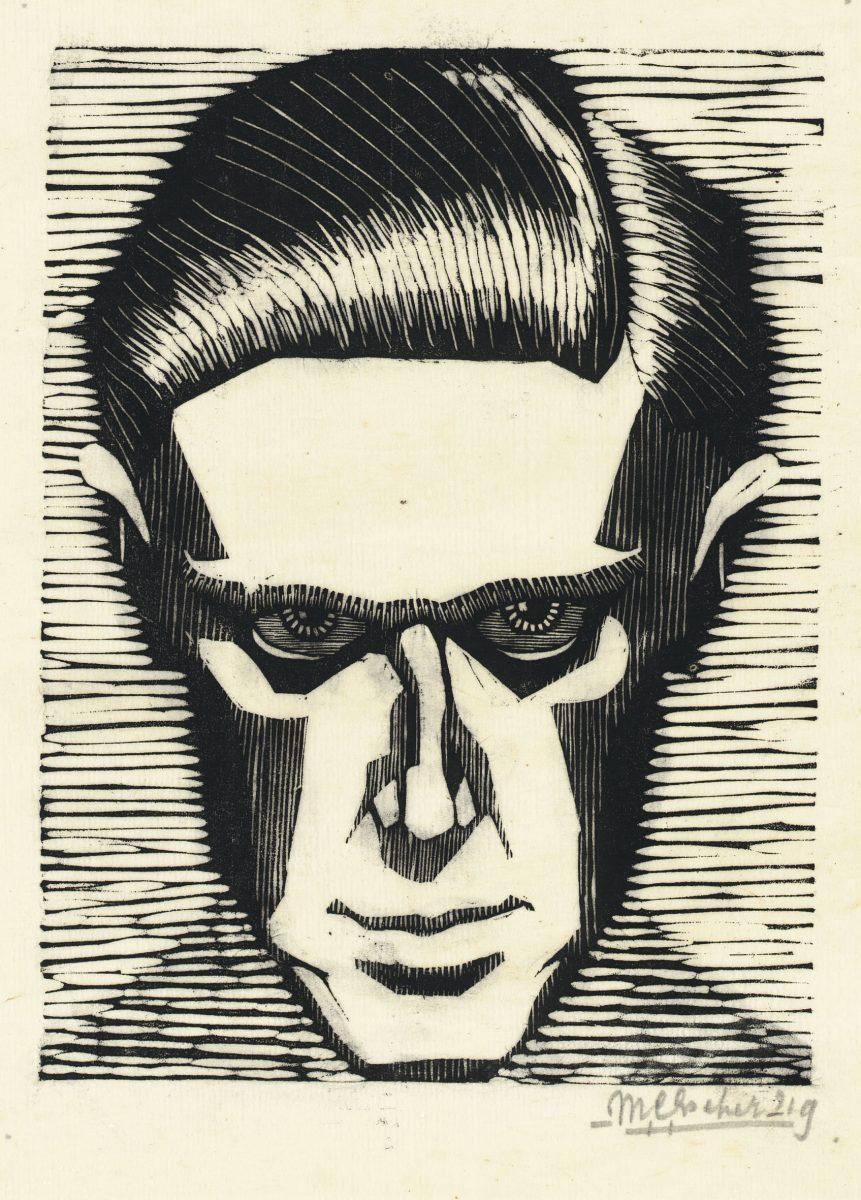
It is believed that he made his next self-portrait, dating from 1919, while still a student at the Haarlem School of Architecture and Decorative Arts. The young man has transformed himself into a serious observer. There is also an early self-portrait by Piet Mondrian that captures the same intense look in his eyes.
This is not surprising: young people are particularly conscious of the importance of their eyes in observing the world around them, as well as themselves and their art. Here we see a determined individual who views the world and us with immense intensity. The head emerges magnificently from the background to meet us. By carving out that background using coarse horizontal lines, Escher managed to create a sharp contrast with the head, for which he used fine etching needles or - more likely - burins, or possibly even small woodcutting knives.
The next self-portrait is more animated and stands out from the others in this series. Escher appears to have placed the mirror at an angle on the ground and is looking at himself from a low perspective: his shiny shoes are given almost as much attention as his dry, ironic smile. If ever there was a self-portrait that evokes the essence of bohemian, then this surely this early self-portrait is it.
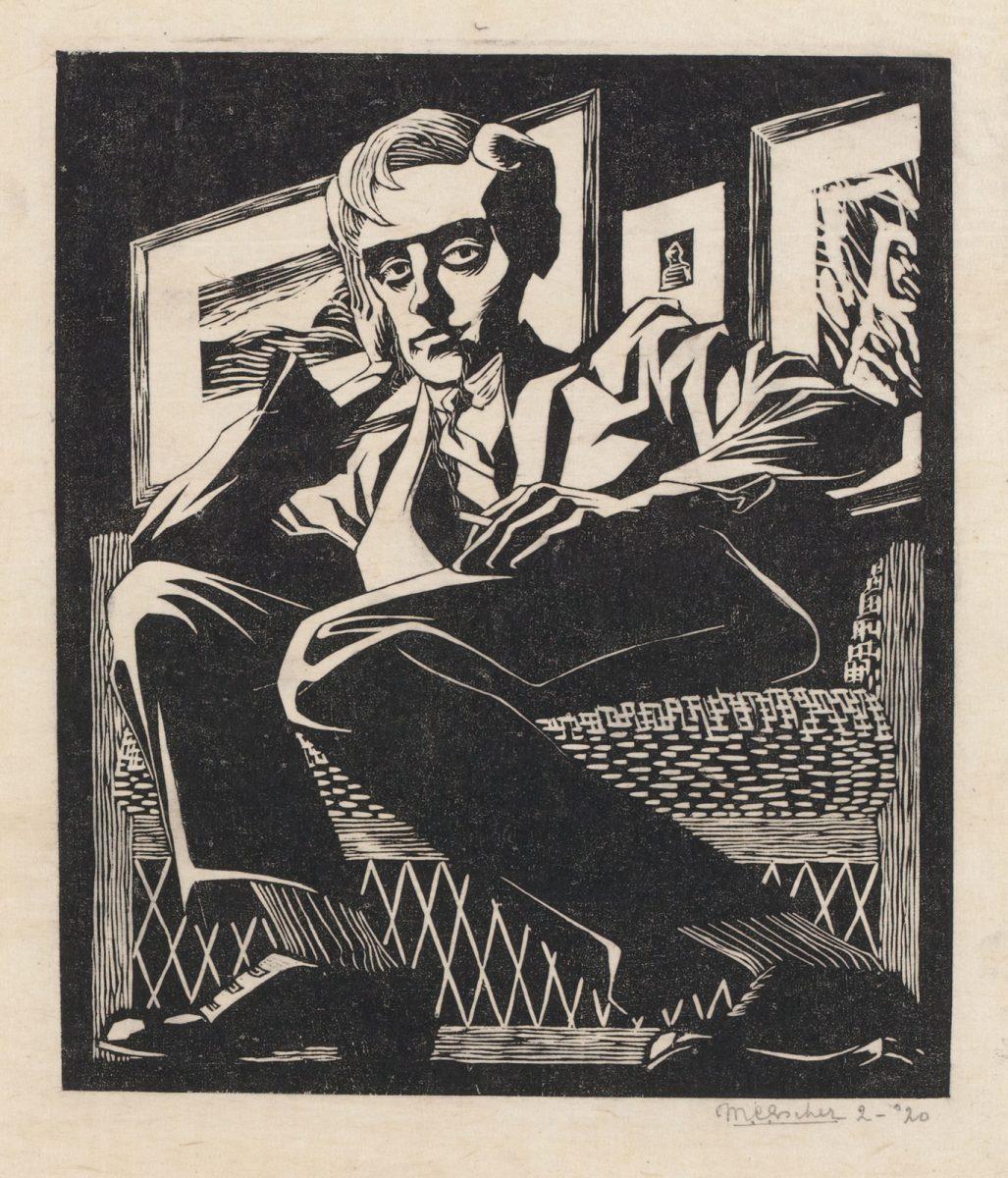
Seen from the viewer's perspective, the zigzagging of the legs runs all the way up to Escher's right elbow. Via his shoulder and eyes, our eyes are directed to the other side and into the top-left corner. Finally our gaze returns to the bright eyes and we see the prominent art behind Escher's head. Escher is making a clear statement: I am an artist, these are my surroundings, I am the master of my craft and I have my own (unorthodox) vision.
The next in this series, is a self-portrait of the artist at work. This is not so much a portrait of Escher as Escher. However, the pattern with the spherical mirror - a silver sphere - was to feature heavily in his later work. In this print Escher may well have perceived the spherical mirror as a star floating around in the universe. After the Second World War, Escher became preoccupied with the theme of stars and planets. This is not entirely surprising. Escher had been stargazing with his father since the age of fifteen, using a telescope that had been bought especially for him in Paris.
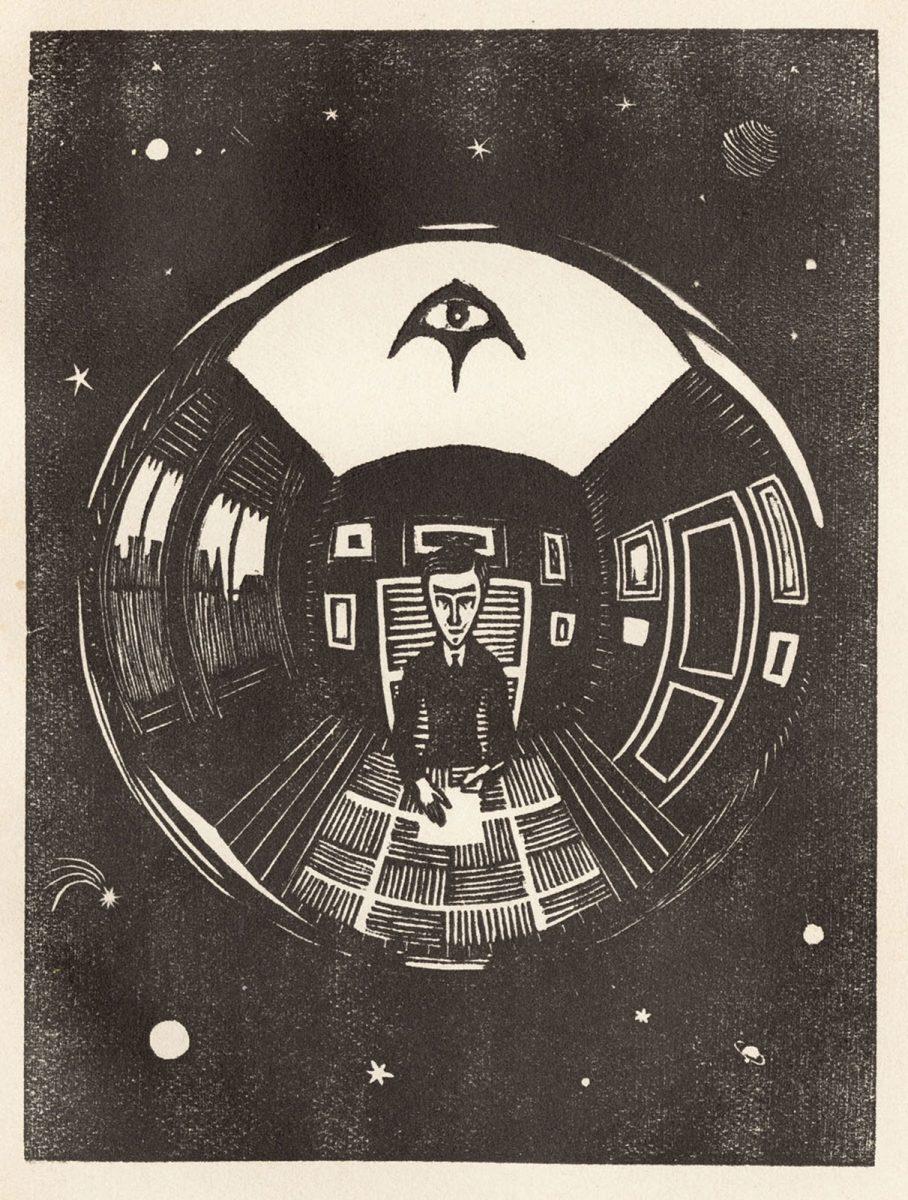
The next self-portrait in essence revisits the fourth: once again, the emphasis is on the eyes and the wavy hair. His eyebrows still meet in the middle but are more refined, friendlier. Of course, this is also because Escher's eyes are at our eye level and are looking straight at us, unlike in the older portrait where his head is slightly at an angle and it looks as though he is fixing his gaze on us from behind his eyebrows.
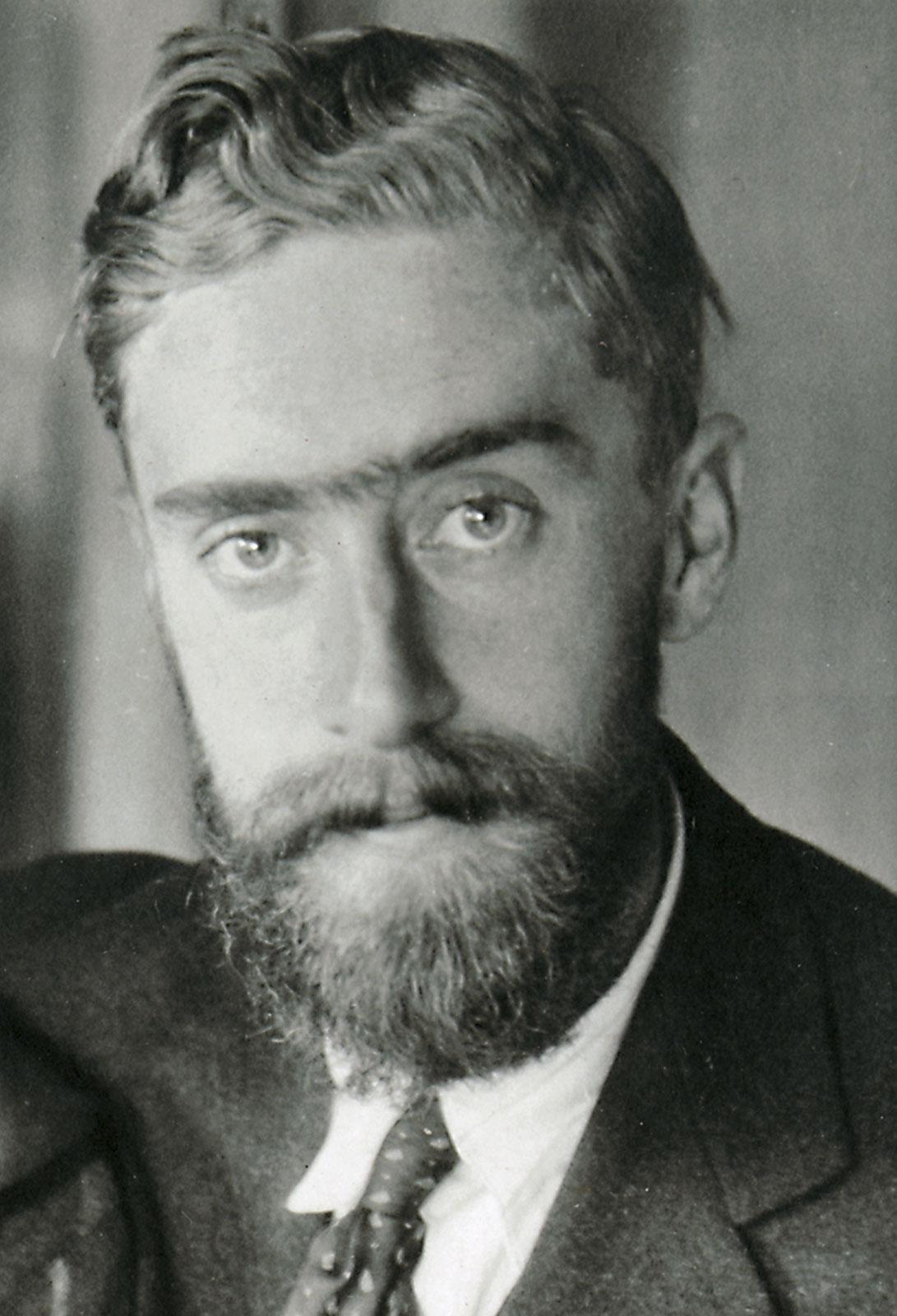
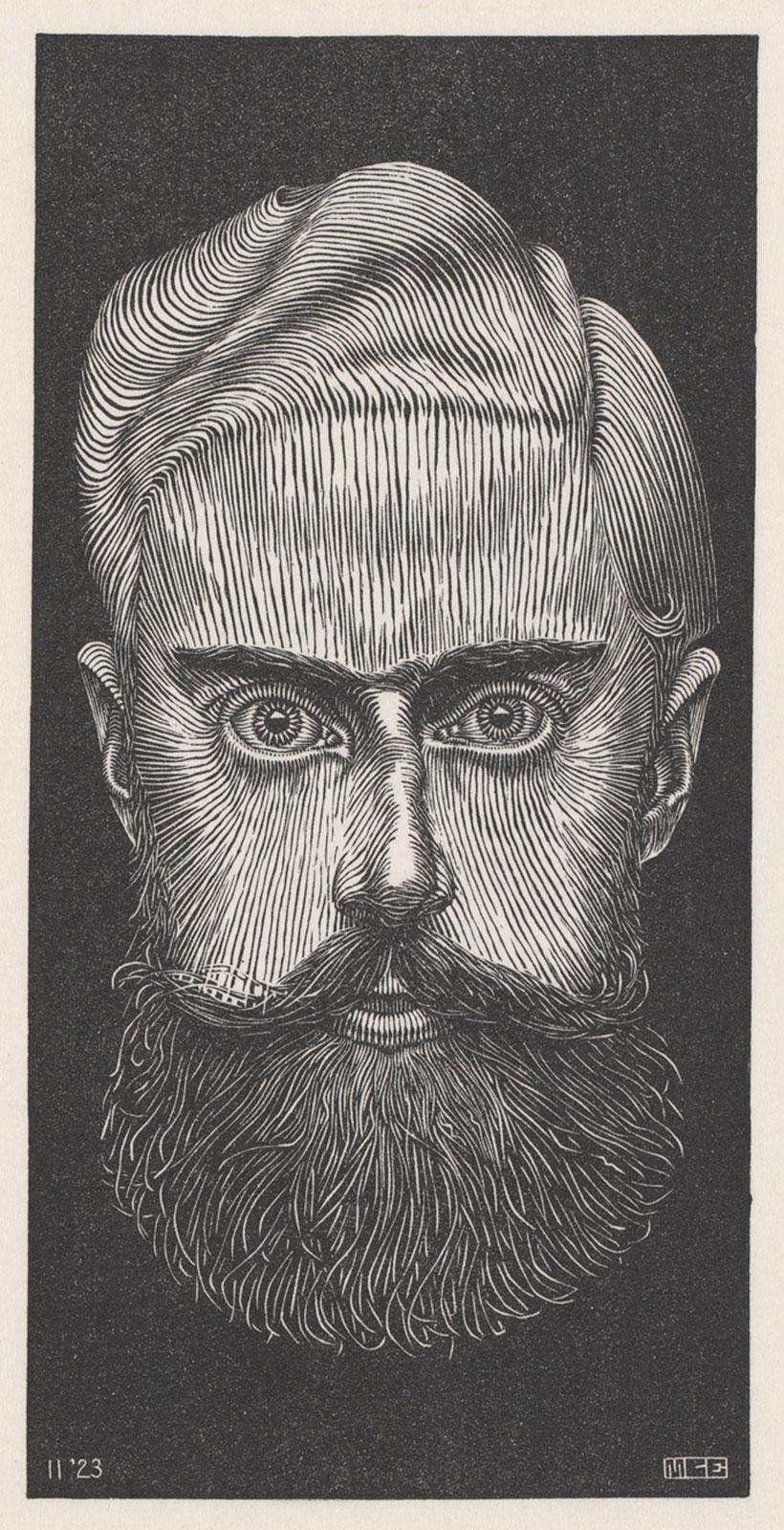
Escher sees himself as someone who has found security. To some extent he has, because he has fallen in love with Jetta Umiker and she has not rejected him. It is interesting in this context to compare this portrait with a photograph from that period. We see a considerably more open and, dare I say it, a slightly shy young man. This lends a nuanced quality to the self-portrait.
Six years later, when he made the next self-portrait, Escher had fathered two children and become an established artist who was recognised by his peers in Rome. We see a kind, friendly man, somewhat pensive and serious, yet with a slightly mischievous look in his eye.
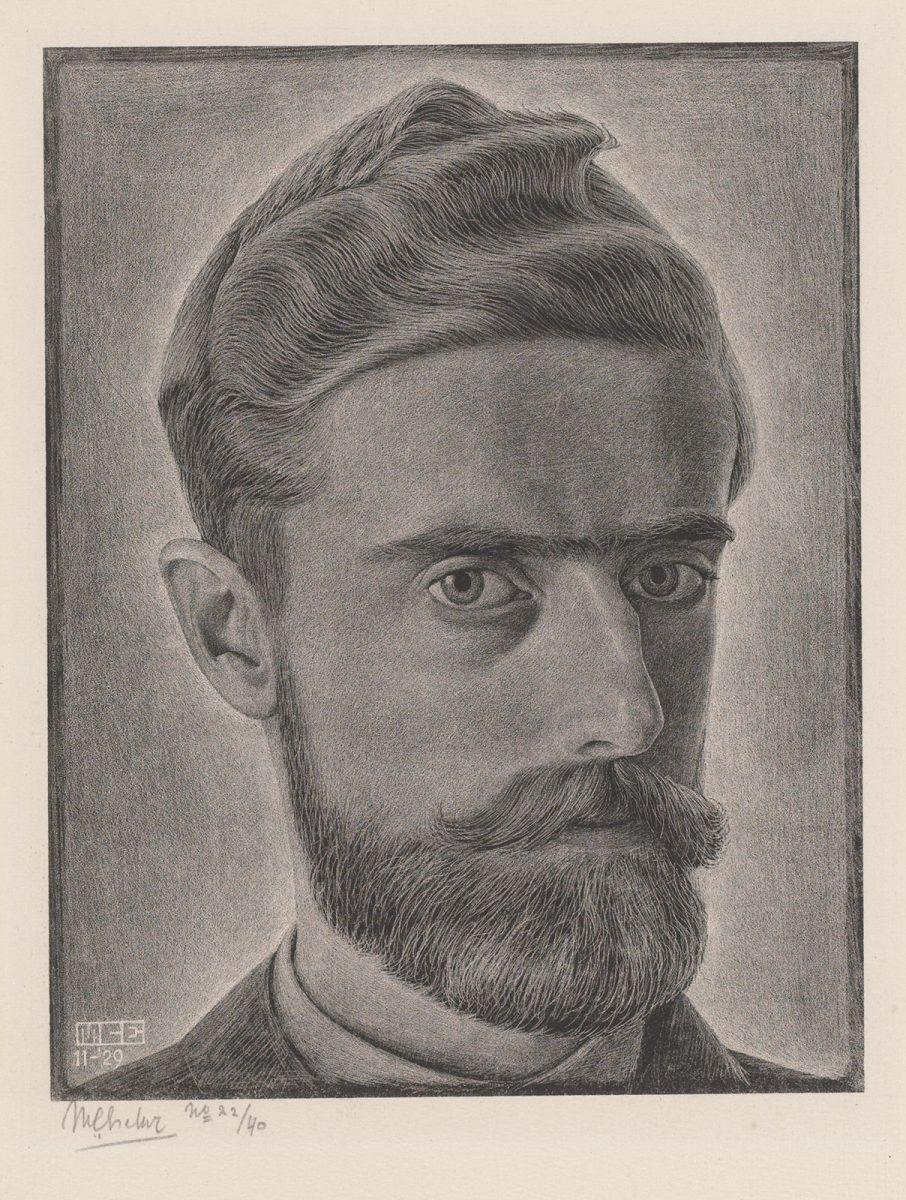
Escher had kept his beard and moustache carefully trimmed during his long walks through Abruzzo in the spring of 1929. However, in the small mountain village of Castrovalva he was imprisoned because of his unkempt and odd appearance, and was mistakenly believed to be the failed assassin of Mussolini!
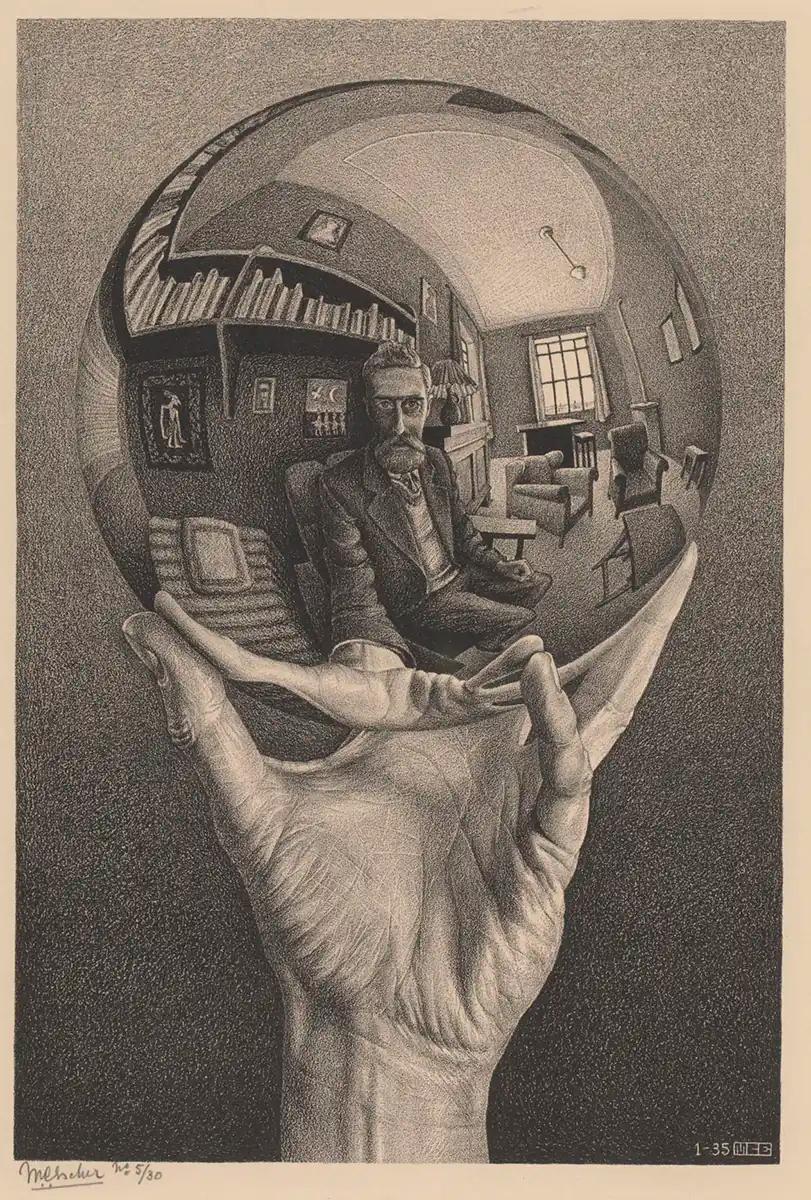
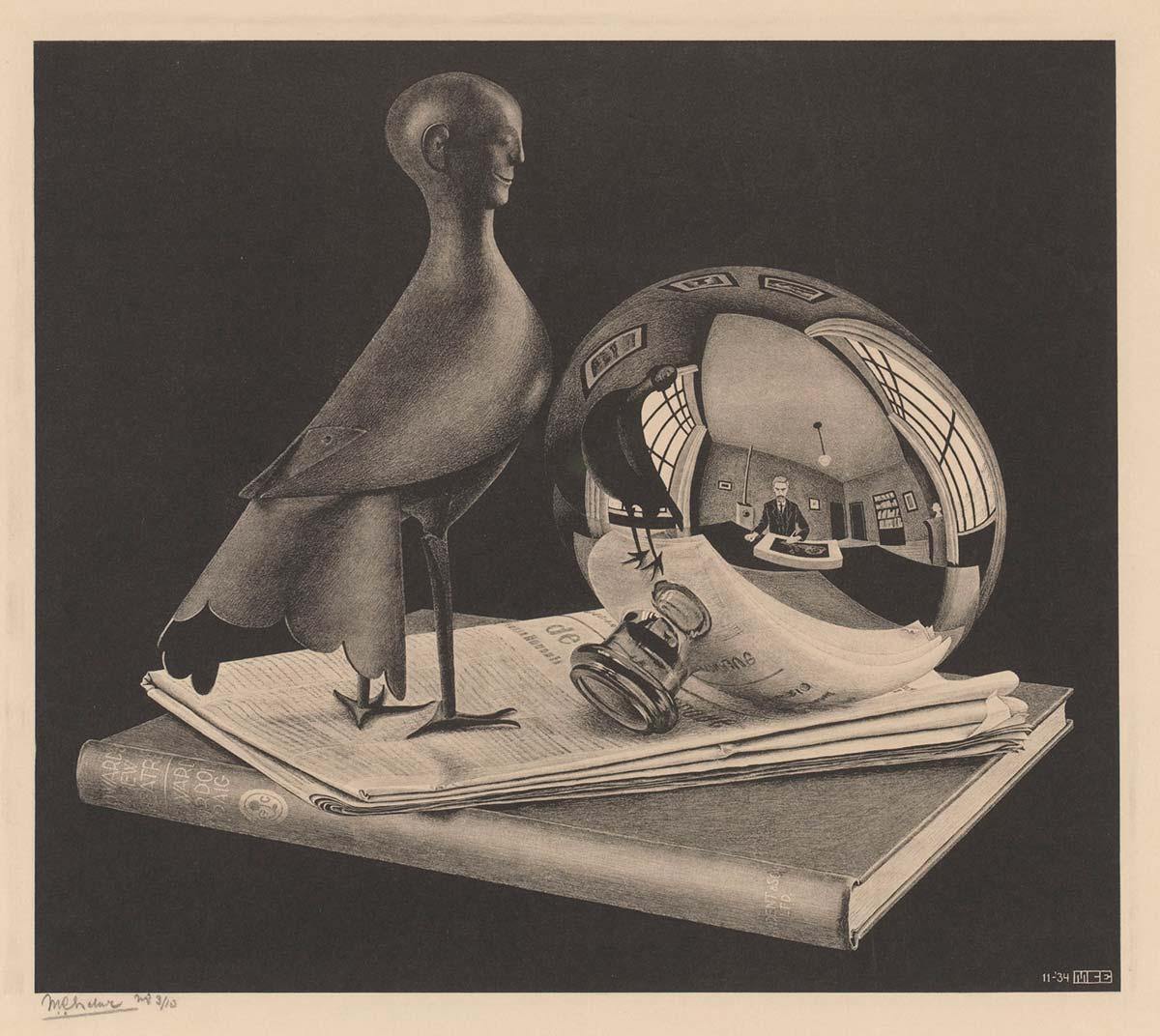
The litho Still life with Spherical mirror dates from November 1934 and Hand with reflecting sphere dates from 1935. In the mirror of the 1935 print we can see the interior of Escher's studio in Via Alessandro Poerio in Rome. In this lithograph, Escher once again depicts the world from an unexpected angle, by emphasising the hand holding the sphere.
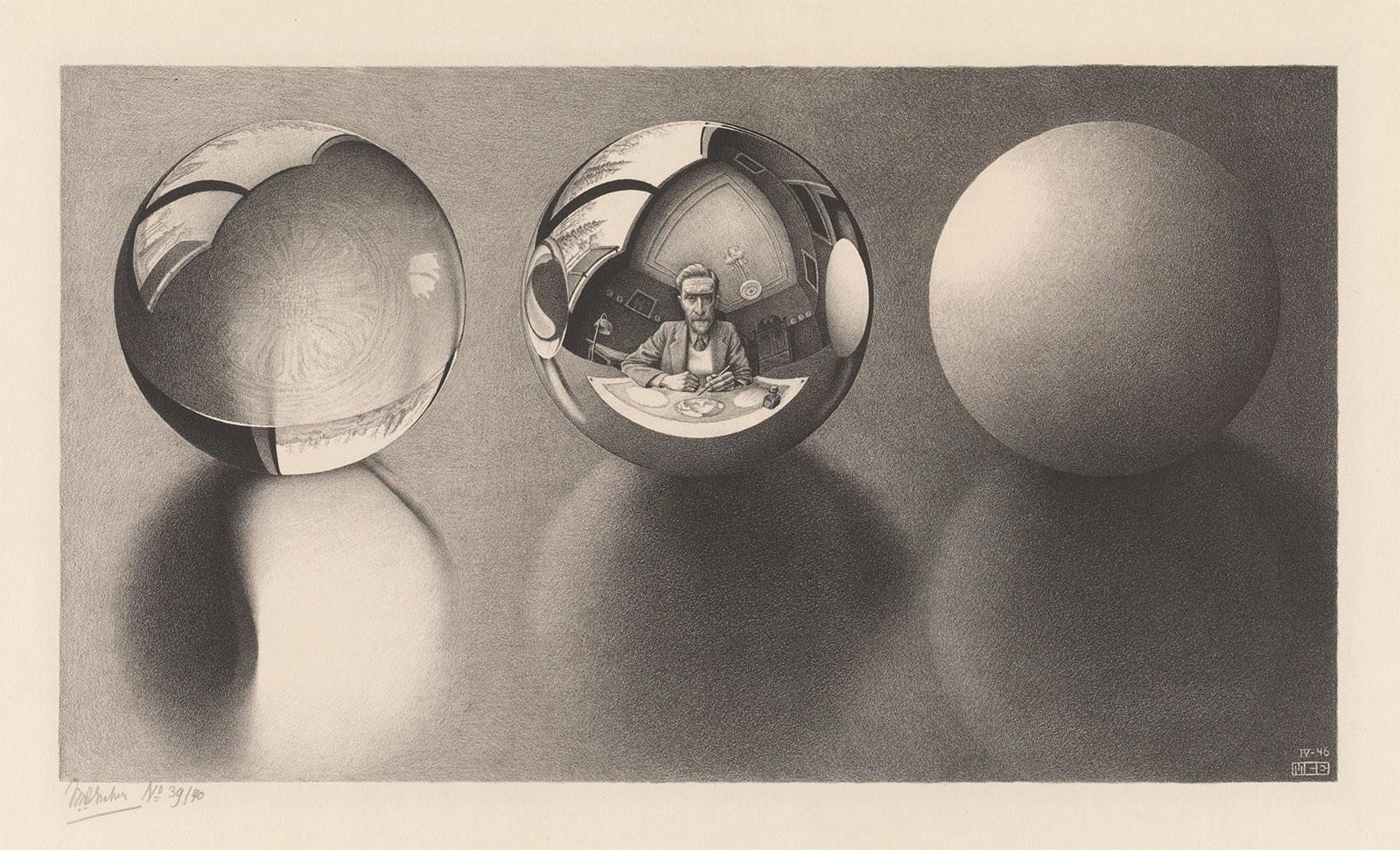
Eleven years later, Escher created the lithograph Three spheres II, which is even more obviously devoted to one of his biggest passions: reflection. Here we can see three spheres made from different materials arranged next to each other. I find the glass sphere on the left even more fascinating that the silver sphere in the middle, in which we can see Escher's studio in Baarn. Has he become a little older and wiser, or is this an overly calibrated image? I suspect that Escher had a sense of irony as well as a dry sense of humour, and that he took immense pleasure out of the fact that people didn't immediately get the joke. Escher was an individual who had a slightly skewed view of the world and therefore looked at things differently.
So why exactly does the sphere on the left appeal to me? Because I think it's amazing how someone is able to depict light like that! A glass sphere reflects light, and that effect is incredibly hard to achieve. As well as being technically ingenious, it is also a beautiful visual paradox.
Escher created his last self-portrait in 1950. He would use it the next year for his exhibition at Kunsthandel Leffelaar in Haarlem. It is small, measuring only 8.2 centimetres across. Approximately it is the same size as his first self-portrait in a spherical mirror that he made for Flor de Pascua.
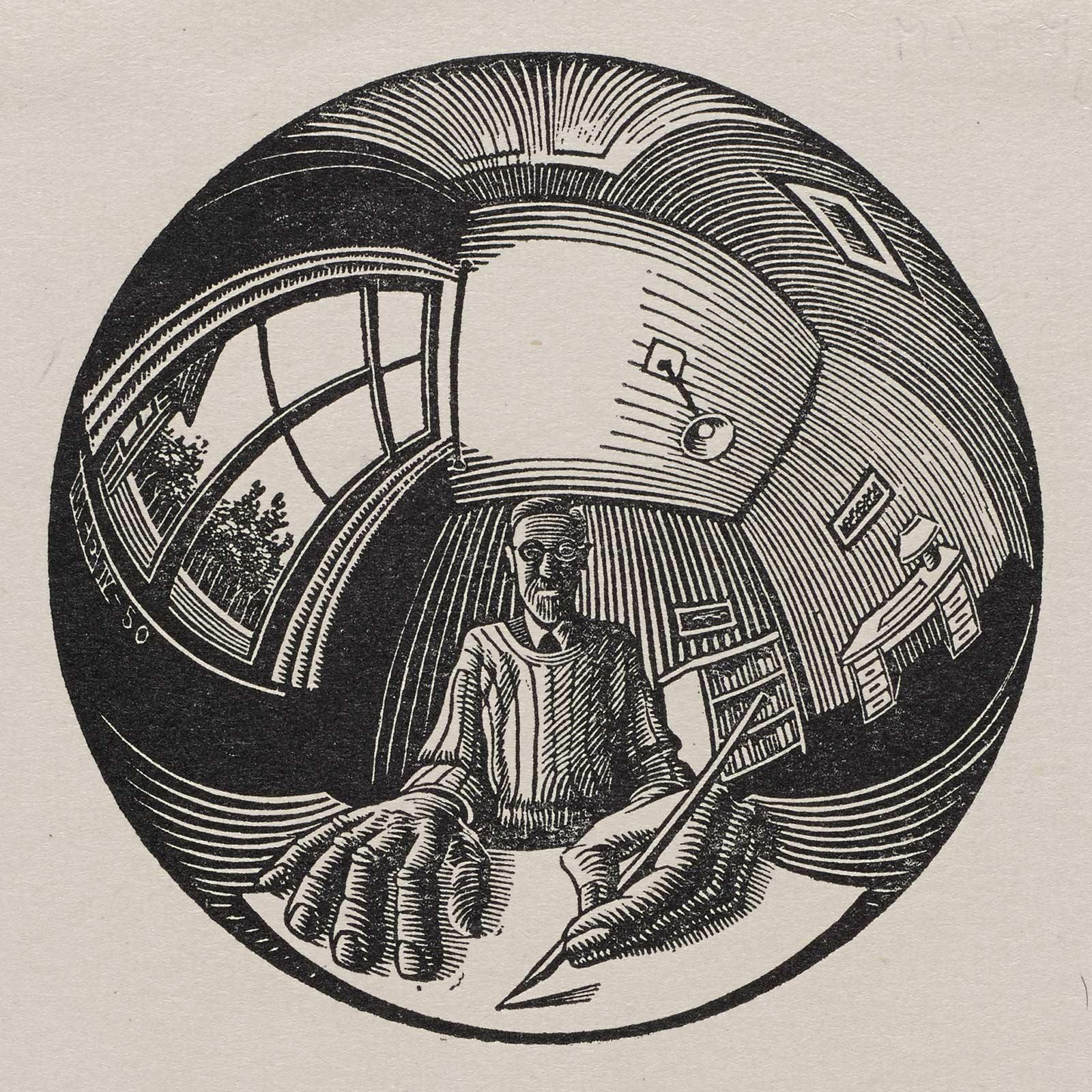
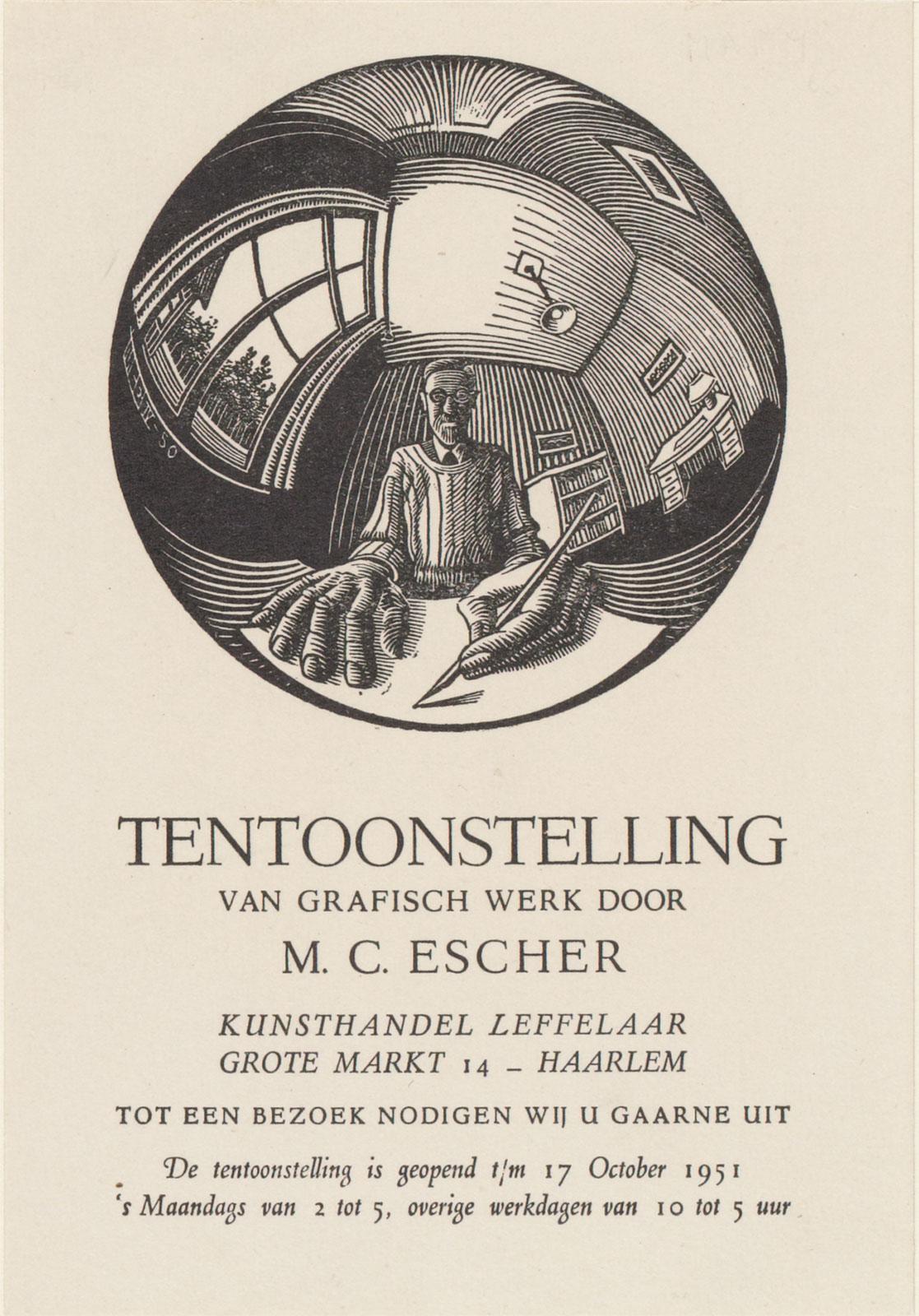
Once again he is the artist, but even more so the man engaged in his craft. For the first time, we see his drawing hands prominently in the foreground. He has created a bit of a caricature of himself. This small self-portrait revisits the essence of his work. His hands, the craftsmanship, are firmly in the foreground. The form and the format are as intimate as the portrait dating from 1921. We have come full circle: out of the old comes something new. This small self-portrait is the last in the series, but started already in 1917.
More stories about Escher


